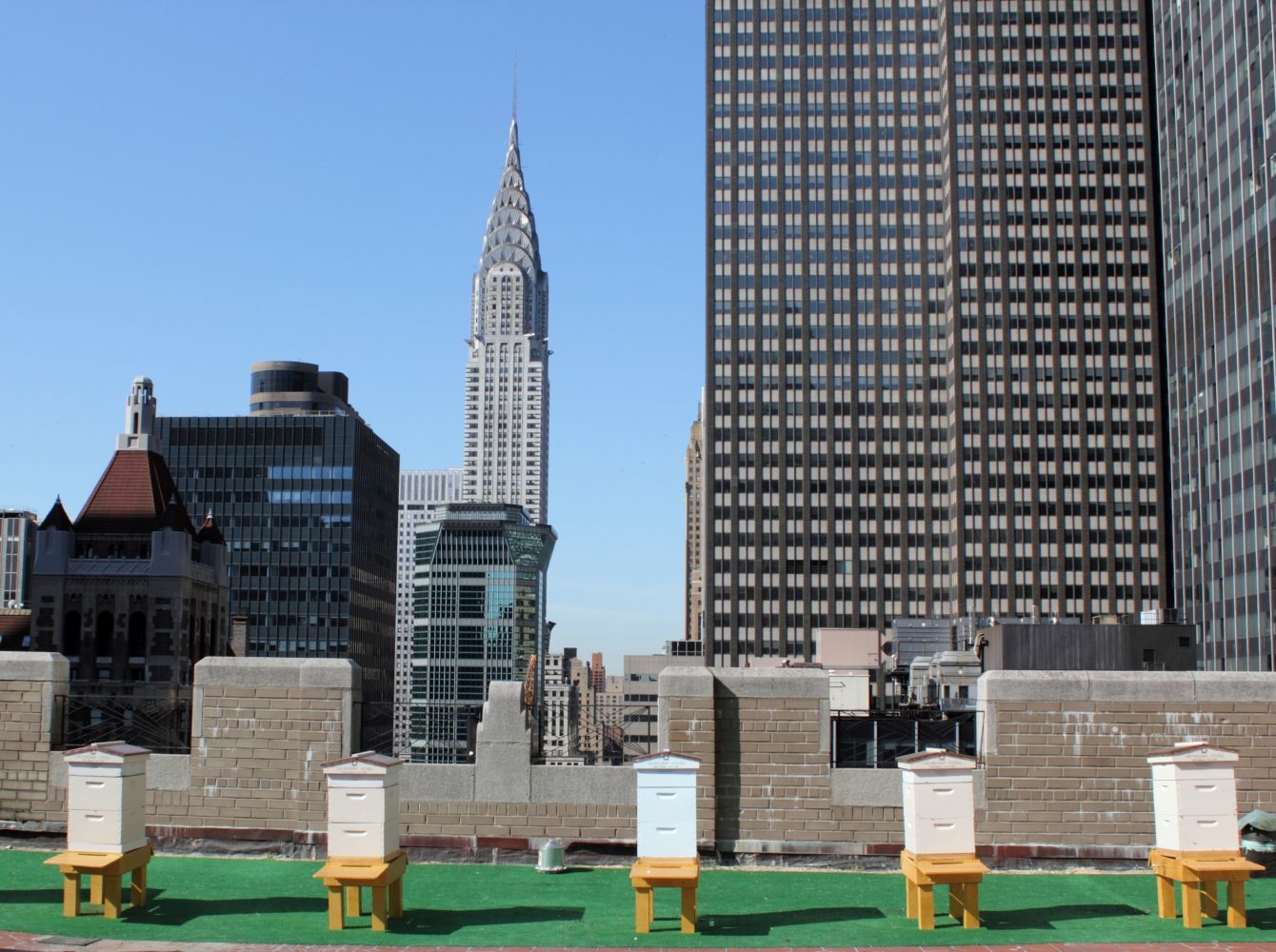Bed bugs in hotel rooms are definitely bad for business, but bees on hotel rooftops can be good for the financial and environmental bottom line.
Beekeepers are moving millions of honeybees into apiaries at hotels in urban and rural areas, with harvested honey showing up in restaurant dishes, beer and cocktails, spa treatments and in lip balm, soap and other products sold or given to guests.
Honeybees are now hosted at 21 Fairmont Hotels & Resorts in North America, Asia, Africa, Bermuda and Mexico, including at the Fairmont Washington, D.C., Georgetown, where three hives with 105,000 Italian honeybees were installed in 2009 for set-up fee of about $1,200,
Maintaining the Fairmont’s DC hives is about $300 per year and the 300 gallons of honey harvested annually (plus honeycomb and beeswax) is used in the hotel’s signature “BeeTini” ($14), in honey walnut bread ($4), in various desserts and sauces as well as in lip balm, honey tea and sunscreen given as amenities and gifts to guests.
“We believe that our honeybees are good for business,” said Ian Bens, chief beekeeper and executive sous chef at the Fairmont Washington, D.C. “Our guests appreciate the fact that we are helping the bee population and the environment, and they enjoy the taste of local honey that is included in much of our culinary program.”
The Waldorf Astoria New York has had from 250,000 to 350,000 bees in residence since 2012, when six beehives were installed on the 20th floor rooftop for a cost of about $4,000.
The hotel’s honey is now an ingredient in dishes in every hotel restaurant and used as gifts by the hotel’s sales team for VIP guests and potential customers. Hotel officials also report that Sunday brunch revenue has increased over 20 percent since the installation of the hives and, since the addition of a tour of the rooftop beehives and garden to the hotel’s Historical Tours ($65 per person—inclusive of lunch, taxes and gratuity), demand has increased by 30 percent.
In Snoqualmie, Washington, not far from Seattle, the apiary at the Salish Lodge & Spa is providing honey for signature dining room dishes, spa treatments, honey-flavored beer and vodka and retail products ranging from honey-flavored marmalade, truffles and caramel corn.
Operating the apiary costs about $9,000 a year, “but we feel that there is no price for doing the right thing,” said General Manager Rod Lapasin. “It is essential that individuals and businesses alike do our part for our environment, of which we know the honeybee is a very essential component.”
Airports are also getting into the apiary business.
Lambert-St. Louis International Airport receives about $75 per year to house beehives on 400 square feet of airport property just north of a runway. The abundance of Dutch clover and the lack of pesticides are big draws to both the beekeeper and the bees. And while the revenue for the airport is minimal, “it’s a great opportunity for us to assist in a ‘green’ initiative that’s positive for environment and the community,” said airport spokesman Jeff Lea, “especially in light of recent reports on bee colony collapse.”
Fifty beehives now sit on land owned by Chicago O’Hare International Airport and produce about 1,000 gallons of honey each year. Their honey is used in such beauty products as lip balm, moisturizer and bath lotion that are sold at Hudson News stores and other locations in O’Hare and Midway airports.
“We have grown the business from $5,000 in 2012 to $25,000 so far in 2013,” said Hudson Group spokeswoman Laura Samuels, who notes that the all-natural lip balm is an especially good seller.
The apiary program pays minimal rent to the airport, but some revenue from product sales does go back to the airport via Hudson News.
And this summer, 16 honey bee colonies were established on land at Seattle-Tacoma International Airport. “We’ve also raised two groups of local queens and are working with the airport to plan the installation of 50 acres of native wildflower meadows,” said Bob Redmond, executive director of The Common Acre, the nonprofit group coordinating the Flight Path project.
The group has already harvested about 250 pounds of honey, sales of which will go toward the costs of the project. Beyond that, he said, “the yields are long-term—healthy local bees, healthy habitat, support of native bee populations, the potential to distribute bees and wildflower seeds around the region, and education and inspiration of tens of thousands of people.”
Sweet.
(My story about bees at hotels and airports first appeared on CNBC)
Thanks for visiting Stuck at the Airport. Subscribe to get daily travel tidbits. And follow me on Twitter at @hbaskas and Instagram.
